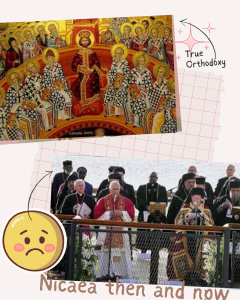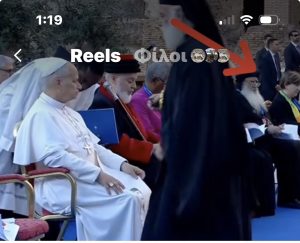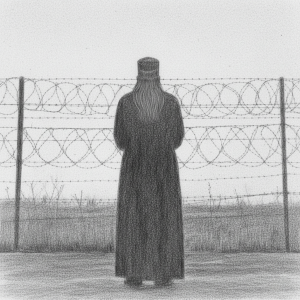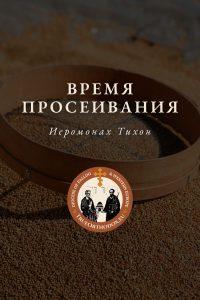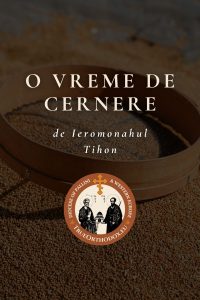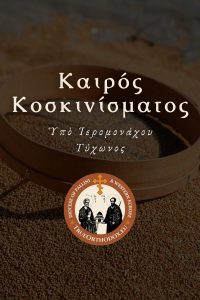1945 AND THE MP’S “THEOLOGY OF VICTORY”
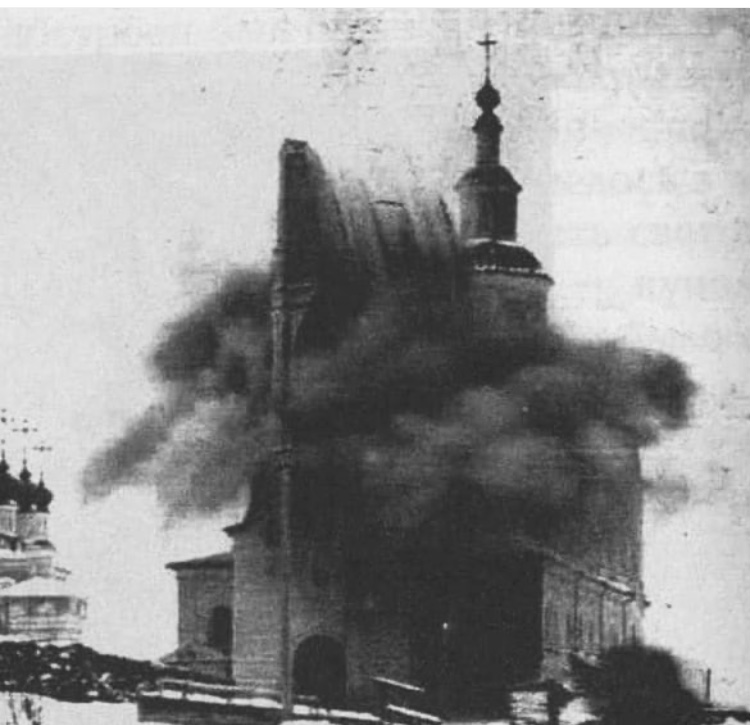
by Dr. Vladimir Moss
Vladimir Moss tells us about a “feastless feast”
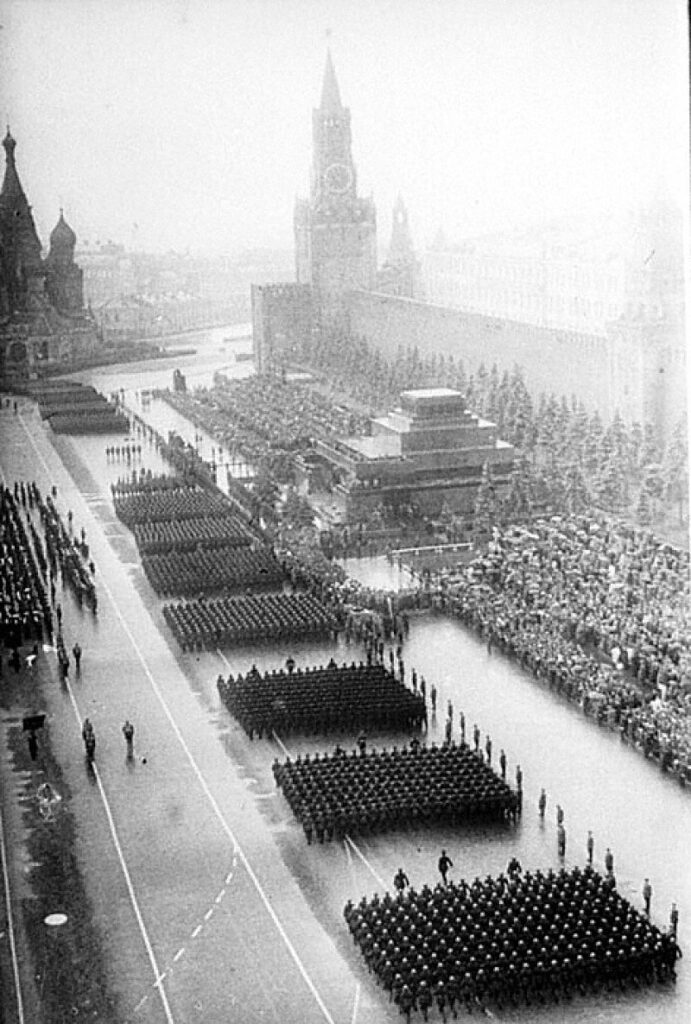
It is well-known that for over eighty years now the Moscow Patriarchate has assiduously defended and advanced the cause of world communism, making excuses for the Soviet government even in its most evil acts – and such acts have been without precedent in world history… This process began with the pro-Soviet “declaration” of Metropolitan, later Patriarch Sergius in 1927. It gathered pace under Patriarch Alexis during and after the Second World War. In the 1960s, under Metropolitan Nicodemus of Leningrad, it acquired a quasi-theological basis in the “Theology of Peace”, very similar to the “liberation theology” of the contemporary Catholic Marxists of Central and South America. This “Gospel of Communist Christianity” suffered a temporary setback after the fall of the Soviet Union in 1991, but towards the end of the 1990s a new “religion of victory” was being developed, a glorification of the Soviet victory in 1945 as a victory of good over evil comparable to the victory of Christ over the devil at Pascha! Now, in 2010, to crown this truly horrific justification of the greatest evil as the greatest good, the new patriarch, Cyril (Gundiaev) has described the deaths of the millions of Soviet citizens in the Second Word War as “a nation-wide propitiatory sacrifice” to God for the sins of the Russian people…[1]
Let us briefly examine how this “theology of victory” grew out of the “theology of peace” of the 1960s.
*
The so-called “movement for peace” or “theology of peace” arose as an essentially political reaction to the foundation of NATO in 1949. This organization had been created in order to defend Europe against Soviet aggression. But from the viewpoint of Marxism-Leninism, it was not a defensive organization, but a threat to world peace.
In line with this position, the MP organized a series of ecumenical conferences “in defence of peace” with representatives not only of the Christian confessions, but also of Hinduism, Buddhism, Judaism, Islam, Shintoism and Sikhism. Insofar as these religious “fighters for peace” worshipped completely different gods or (in the case of Buddhism) no god at all, there was no place at these conferences for the specifically Christian understanding of peace. Thus there was no mention of the fact that peace on earth is possible only if there is peace with God, which is obtained only through faith in the redeeming work of Christ, Who “is our peace” (Ephesians 2.14), and through a constant struggle with evil in all its forms, including atheism and communism.
Moreover, as Kurochkin writes, “on the pages of the ecclesiastical press and on the lips of those speaking before the believers, the similarity and closeness of the communist and Christian social and moral ideals was proclaimed more and more often.” And so the cult of Stalin was transformed into the cult of communism. For “the patriarchal church, having conquered the renovationists, was forced to assimilate the heritage of the conquered not only in the field of political re-orientation, but also in the sphere of ideological reconstruction.”[2]
The “Gospel of Communist Christianity” appeared in an encyclical of the patriarchate “in connection with the Great October Socialist Revolution”, which supposedly “turned into reality the dreams of many generations of people. It made all the natural riches of the land and means of production into the inheritance of the people. It changed the very essence of human relations, making all our citizens equal and excluding from our society any possibility of enmity between peoples of difference races and nationalities, of different persuasions, faiths and social conditions.”[3]
Insofar as the MP confessed that the revolution “changed the very essence of human relations” for the better, it renounced the Christian Faith for that of the faith of the Antichrist. This aspect of the MP’s apostasy is often forgotten. And of course now, since the fall of communism, the MP no longer talks about its enthusiasm for the antichristian creed of communism. But by any normal definition of words, the hierarchs of the MP ceased to be, not only Orthodox in any meaningful sense, but also Christian at this time…
“The so-called ‘theology of peace’,” wrote Protopresbyter George Grabbe, “is in essence the chiliastic preaching of the Kingdom of God on earth, with the help of the planting of communist socialism…
“The peace which the Moscow patriarchate is clamouring for is not spiritual peace, but political peace, and moreover, a false peace, for the so-called ‘theology of peace’ is linked with the deceptive propaganda of the Soviets. In trying to echo communist propaganda, the patriarchate is involuntarily falling into the preaching of a certain kind of chiliasm, that is, the attainment of a golden age and general peace by human means of a political character. If the Saviour said: ‘Seek first of all the Kingdom of God, and all the rest will be added to you,’ the Moscow patriarchate puts the question in the reverse order: the Kingdom of God must be attained through the external means of the communist social order.
“That is why, in his report ‘Peace and Freedom’ at the local conference of the movement for peace in Holland in 1963, Metropolitan Nicodemus called for the Church to come closer to this world. ‘From ancient times,’ he said, ‘the apologists of the unchangeability of social relations have begun to incline the thoughts of Christians to complete alienation from the world with the aim of drawing them away from burning social problems, for the struggle for the reconstruction of society on the principles of justice. Under the long influence of this pseudo-Christian preaching whole generations of narrow fanatics have been educated and grown up with distorted ideas about Christianity’ (J.M.P., 1963, № 1, p. 40).
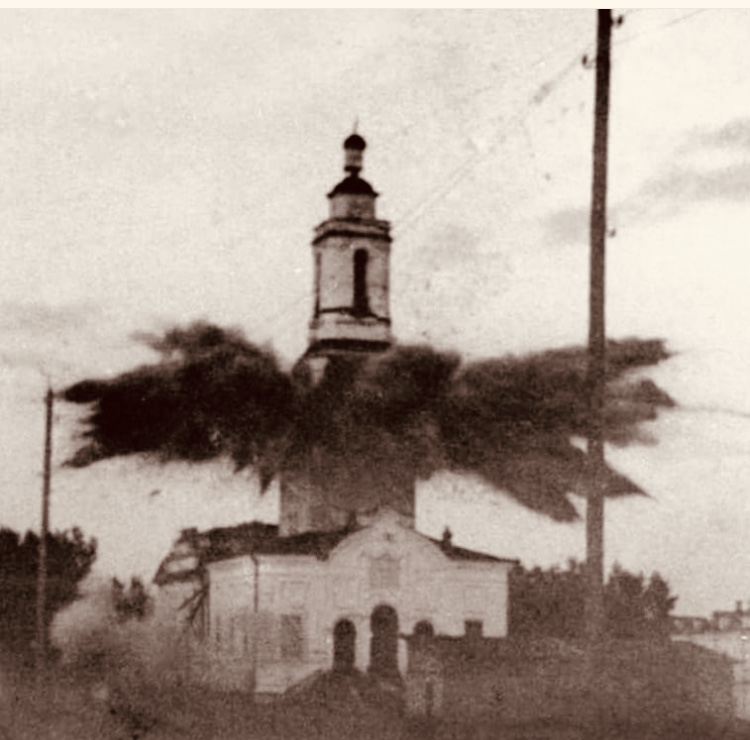
“What is Metropolitan Nicodemus renouncing in these words? He is renouncing the patristic and ascetic past, he is trying to turn the Church from striving for heaven to the path of earthly social tasks. His Kingdom of God on earth is the communist order.
“He is echoed by Protopriest V.M. Borovoj, who expressed himself still more vividly: ‘Systematic theology and the historical churches have never been on the side of the revolution for the simple reason that they were prisoners of the cosmo-centric understanding of reality, prisoners of the static understanding of an order established once and for all on earth. Only in the last decades, when profound changes, a kind of revolution, have taken place in philosophical, theological and scientific thought as the result of an anthropocentric view of the cosmos, an evolutionary conception of the universe and a new rethinking of the whole history of humanity – only after all this has there appeared the possibility of working out a theology of development and revolution’ (J.M.P., 1966, № 9, p. 78)…
“By moving in this apostatic direction the Moscow patriarchate has already lost Christianity itself, replacing it with the religion of this world. Contrary to the word of the Saviour (Matthew 6.24), it is trying to serve two masters, and, as the Saviour warned, it has arrived at the point where it is careless with regard to Christianity but ardent in serving atheist communism.”[4]
Marxism-Leninism went out of fashion after the fall of the Soviet Union in 1991. But the communist spirit never died, and by the end of the liberal era of the 1990s, it revived in the form of “National Bolshevism”, an extreme nationalistic form of the old communism with some “Orthodoxy” added but without Marxism. This modernized form of the old ideology sought to justify the Soviet past in all its unprecedented evil, and rejected repentance for its sins as a betrayal of the nation.
It was illustrated most vividly in an article entitled “The Religion of Victory” in which a new Russian religio-political bloc, “For Victory!” presented its programme. The victory in question was the victory of the Soviet forces over Nazi Germany in 1945, whose blood was considered by the bloc to have “a mystical, sacred meaning”, being “the main emblem of the Russian historical consciousness”. The political and economic aspects of the bloc’s programme were communistic; but its nationalist and religious aspects were still more alarming. Yeltsin and his colleagues were accused of having betrayed ’45 and the “truly genius-quality” achievements of post-war Sovietism.
“The enemy [which is clearly the West],” wrote Valentine Chikin, “has not succeeded in destroying our Victory. Victory is that spiritual force which will help us to be regenerated. From Victory, as from a fruitful tree, will arise new technologies, will grow new schools, defence will be strengthened, a world-view will be worked out. And a new communality embracing the whole nation will confirm the Victory of ’45 in the 21st century.
“Let us not forget: in the 40s a wonderful fusing together of Russian epochs took place. Of the pagan, with Prince Sviatoslav [‘the accursed’, as the Orthodox Church calls him], who defeated the Khazars. Of the Orthodox, in which the great Russian commanders and saints Alexander Nevsky and Dimitri Donskoj acted. Of the monarchist, with Peter, Suvorov and Kutuzov. In the smoke of the battles of the Fatherland war they combined with the brilliant ‘reds’ Zhukov, Vasilevsky and Rokossovsky, which Joseph Stalin so clearly and loudly proclaimed from the Mausoleum…
“Only the bloc ‘For Victory’ has the right to claim the breadth of the whole nation. The ideology of the bloc ‘For Victory!’ is the long awaited national idea… Victory is also that sacred word which overflows the Russian heart with pride and freedom.”
Alexander Prokhanov continued the theme: “Victory is not simply the national idea. Victory is a faith, the particular religious cast of mind of the Russians. Under the cupola of Victory both the Orthodox and the Muslim and the atheist and the passionately believing person will find himself a place. Of course, in order to reveal this faith, it needs its evangelists, such as John the Theologian. It needs its builders and organizers. In the consciousness of this religious philosophy there is a place for artists and sculptors, sociologists and political scientists, historians and politicians.
“We still have to finish building this great Russian faith – Victory! In it the miracle expected for centuries, which was handed down from the sorcerers from mouth to mouth, from Kievan Rus’ to the Moscow princedom, from the empire of the tsars to the red empire of the leaders (vozhdej). This is the hope of universal good, of universal love. The understanding that the world is ruled, not by the blind forces of matter, but by Justice and Divine righteousness….”[5]
Orthodox writers rushed to support this ideology. Movements began for the canonization of such “strong” leaders as Ivan the Terrible and Rasputin. “Icons” of Stalin have appeared. And, most horrific and blasphemous of all, the anniversary of the Soviet victory on May 9, 1945 was described as a “feast of feasts” comparable to Pascha – even as Pascha itself! Thus in an article on an MP web-site we read: “The ‘atheist’ USSR, trampling down death by death, resurrected and saved the world. Only because ‘godly’ and ‘ungodly’ soldiers died in their millions do we live today and the whole population of the world, the whole of humanity, is alive. It would be no exaggeration to think that that terrible and great war and great Victory in that Great war caused the first sociologically large-scale micro-resurrection, a reproduction by the peoples of the USSR of the exploit of Christ. May 9, 1945 became the most convincing witness of the fact that 2000 years ago Christ was resurrected. Therefore our Great Victory is the feast of feasts, it is Pascha…”[6]
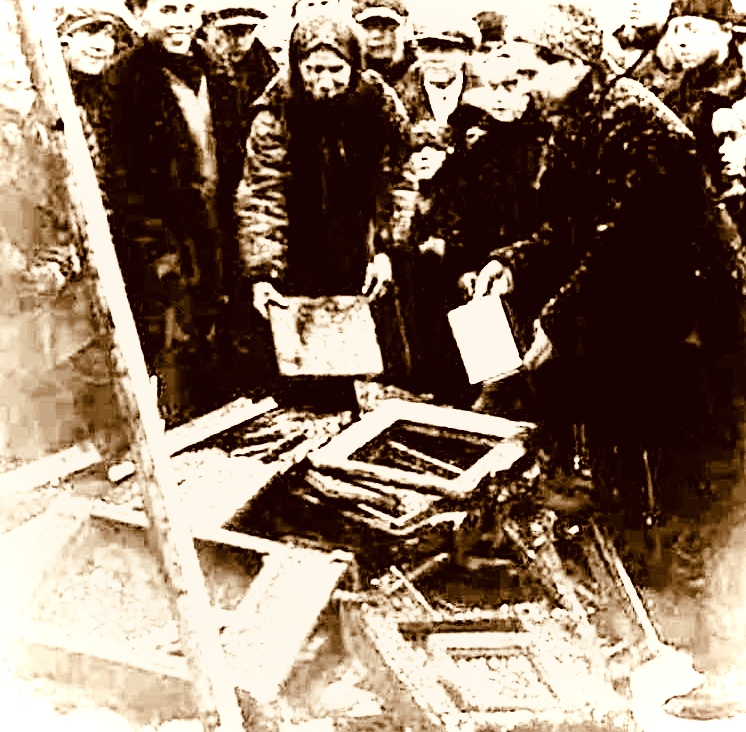
Again, the former idol of ROCOR’s liberals, Fr. Demetrius Dudko, wrote: “Now the time has come to rehabilitate Stalin. And yet not him himself, but the concept of statehood. Today we can see for ourselves what a crime non-statehood is and what a blessing statehood is! No matter how many cry that in Soviet times many perished in the camps – how many are perishing now, without trials or investigations… If Stalin were here, there would be no such collapse… Stalin, an atheist from the external point of view, was actually a believer, and this could be proved by facts if it were not for the spatial limitations of this article. It is not without reason that in the Russian Orthodox Church, when he died, ‘eternal memory’ was sung to him… The main thing is that Stalin looked after people in a fatherly manner. Stalin legitimately stands next to Suvorov!”[7]
“Ecclesiastical Stalinism” was the most horrific sign of the lack of repentance of the Moscow Patriarchate even now that it had been liberated from Soviet oppression. That lack of repentance has continued and intensified in the first decade of the twenty-first century. In 2010, it has become the official ideology of the Moscow Patriarchate as preached by her new leader, Patriarch Cyril, who believes that “we must be penetrated with a special understanding of the redemptive significance of the Great Patriotic War – and this is a religious understanding”.
Cyril mocks those historians who think that the evil on the Soviet side was no less than that on the Nazi side: with their “primitive and sinful analysis”, he says, they fail to see “the Divine perspective”. The fact is, according to the patriarch, that Russia was spiritually regenerated in 1945 thanks to the blood of the millions of Soviet citizens who died in the war. That is why we must triumphantly celebrate May 9 as a general Church feast.[8]
Let us consider for a moment what actually happened in the war, and in the period just before and after it.
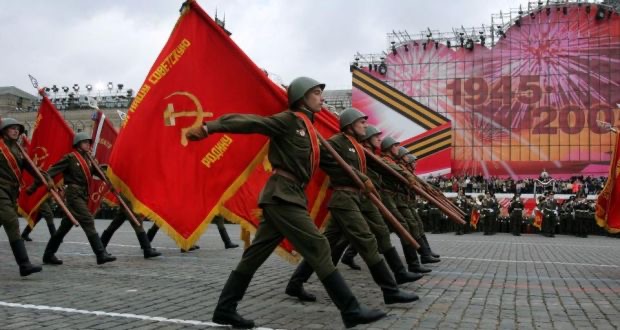
The period 1917 to 1941 constituted the most relentless, massive, bloody and destructive persecution of the Orthodox Church in the whole of her history. To take just one out of many staggering statistics: according to Russian government figures, in 1937 alone 136,900 clergy were arrested, of whom 106,800 were killed.[9] Not content with destroying its own citizens on an unprecedented scale, the Soviet Union then entered into a pact with Nazi Germany, and proceeded, with the Nazis’ blessing, to invade Poland, the Baltic countries and Finland.
The Nazi invasion on the Sunday of All Saints of Russia, 1941 liberated Western Russia from the Soviet yoke, and was greeted with unfeigned enthusiasm by most of the inhabitants. The collective farms (slave-labour camps in all but name) were dissolved, the churches were reopened, and millions of people were baptized, enjoying free church life for the first time in a generation. Legitimate church hierarchies were re-established in the form of the Autonomous Orthodox Churches of Belorussia and the Ukraine, who joined ROCOR in 1946.
However, it was a different story for those who remained in the Soviet sphere. The miseries of war compounded the miseries created by the Soviets themselves, and there was no let-up in the persecution of the Christians, especially the Catacomb Christians who refused to recognize Soviet power or fight “for the achievements of October”. Many were shot for refusing to serve in the Red Army; thousands more were sent to the camps.
Moreover, in spite of the best efforts of the Soviet propagandists, there was no genuine revival of Russian patriotism, in spite of the peddling of the myth of “the Great Fatherland War” as a great victory for Russian patriotism over a foreign invader. For, as Anton Kuznetsov writes, “from the very beginning the Bolsheviks showed themselves to be an anti-Russian power, for which the concepts of Homeland, Fatherland, honour and duty do not exist; in whom the holy things of the Russian people elicit hatred; which replaced the word ‘Russia’ with the word ‘Internationale’, and the Russian flag with the red banner; which even in its national composition was not Russian: it was dominated by Jews (they constituted a huge percentage, and at first it seemed as if it was a question of a purely ‘Jewish power’) and foreigners.
“During the 24 years of its domination the Bolshevik (‘Soviet’) power had had enormous successes in the annihilation of historical Russia. All classes were wiped out one by one: the nobility, the merchants, the peasantry, the clergy and the educated class (including all the Russian officers), and all the state institutions of what had been Russia were destroyed: the army, the police, the courts, local administration, charitable institutions, etc. A systematic annihilation of Russian culture was carried out – churches were blown up, museums were robbed, towns and streets were renamed, Russian family and everyday traditions were exterminated, Russian sciences and schools were liquidated, the whole of Russian history was blotted out and spat upon. In the place of the annihilated Russian element a red and Soviet element was created, beginning with the Red army and the Red professors and ending with Soviet orthography and Soviet sport. Our earthly Fatherland, Russia, was in fact destroyed, by terror; she was transformed into the Sovdepia, which was a complete denial of Russia – it was anti-Russia. A Russian person has no right to forget that a consistent denial of Russian statehood is that on which the Soviet regime stood and on which it prided itself with emphasis.
“One has no right to call such a regime a national power. It must be defined as an anti-national, occupying power, the overthrow of which every honourable patriot can only welcome.
“… The antinational and antipopular essence of the Red (Soviet) army is clear to everyone who has come into more or less close contact with this army.
“Every Russian who has preserved his national memory will agree that the Workers and Peasants Red Army (RKKA) never was either the continuer of the traditions, nor the successor by right, of the Russian Imperial Army (that is what the White army was and remains to this day). The Red army was created by the Bolsheviks in the place of the Russian Army that they had destroyed. Moreover, the creators, leaders and backbone of the personal make-up of this army were either open betrayers of the Homeland, or breakers of their oath and deserters from the Russian Army. This army dishonoured itself in the Civil war by pillaging and the killing our Russian officers and generals and by unheard-of violence against the Russian people. At its creation it was filled with a criminal rabble, village riff-raff, red guards, sailors, and also with Chinese, Hungarians, Latvians and other ‘internationalists’. In the make-up of the Red army the communists constituted: in 1920 – 10.5%, in 1925 – 40.8%, in 1930 – 52%, and from the end of the 30s all the command posts were occupied by communists and members of the Komsomol. This army was stuffed with NKVD informants and political guides, its destinies were determined by commissars, the majority of whom were Jews; it represented, not a national Army, but the party army of the Bolshevik Communist Party (B) – the Communist Party of the Soviet Union. The slogan of this army was not ‘For the Faith, the Tsar and the Fatherland!’, but ‘Give us the Internationale!’ This army was created from the beginning, not for the defence, but for the enslavement of our Fatherland and in order to turn it into ‘the launch-pad of world revolution’; it had to wage an aggressive war against it in order to spread antitheist communism throughout the world…
“But of course the most terrible blow at this myth is delivered by the Russian Liberation Army [ROA] in the Second World War, which is called ‘the Vlasovites’ by Soviet patriots. The very fact that at various times 1,000,000 (one million!) Soviet citizens served in the German Wermacht must cut off all talk of a ‘great fatherland’ war, for in fact: where, when and in what Fatherland war do people in such numbers voluntarily pass over to the side of the opponent and fight in his ranks? Soviet patriots find nothing cleverer to say than to declare these people innate traitors, self-seekers and cowards. This is a blatant lie, but even if it were true, it remains complete incomprehensible why Russia never knew such a massive ‘betrayal’ in her history. How many wars has Russia waged, and never have there been so many traitors, turncoats and ‘self-seekers’ among us. And yet it was enough for the ‘Fatherland’ war to begin and not just a simple one, but a ‘Great’ one, and hundreds of thousands of people with weapons in their hands passed over to the side of the enemy. Moreover, people were enlisting in the ROA even in 1945, when the fall of Hitler’s Germany and the victory of Stalin was evident…”[10]
As the Bolsheviks retreated in 1941, “the NKVD carried out a programme of liquidation of all the prisoners sitting in their jails. In the huge Lukyanov prison in Kiev thousands were shot in their cells. But in Stavropol they still had time to take the ‘contras’, including several old priests and monks, out of the city. They were led out onto the railway line from Kislovodsk to Moscow. At the small station of Mashuk, where the poet Lermontov had his duel, the wagons containing the prisoners were uncoupled from the trains and shunted into a siding at Kamenolomnya. Then the priests and monks were taken out with their hands bound and their eyes covered. In groups of five they were led to the edge of a sheer cliff, and thrust over the edge. Then the bodies were lifted up with hooks and covered with crushed stone and sand before a tractor levelled the area for the next wagon-full…”[11]
The Germans were in general greeted with ecstatic joy. Thus Alexander Solzhenitsyn writes: “Lithuania, Latvia, and Estonia gave the Germans a jubilant welcome. Belorussia, the Western Ukraine, and the first occupied Russian territories followed suit. But the mood of the people was demonstrated most graphically of all by the Red Army: before the eyes of the whole world it retreated along a 2,000-kilometre front, on foot, but every bit as fast as motorized units. Nothing could possibly be more convincing than the way these men, soldiers in their prime, voted with their feet. Numerical superiority was entirely with the Red Army, they had excellent artillery and a strong tank force, yet back they rolled, a rout without compare, unprecedented in the annals of Russian and world history. In the first few months some three million officers and men had fallen into enemy hands!
“That is what the popular mood was like – the mood of peoples some of whom had lived through twenty-four years of communism and others but a single year. For them the whole point of this latest war was to cast off the scourge of communism. Naturally enough, each people was primarily bent not on resolving any European problem but on its own national task – liberation from communism…”[12]
“In the years of the war,” writes Anatoly Krasikov, “with the agreement of the German occupying authorities, 7547 Orthodox churches were opened (as against 1270 opened in 1944-1947 with the permission of the Council for the Affairs of the Russian Orthodox Church).”[13] Even in fully Sovietized regions such as Pskov and the Eastern Ukraine, 95% of the population, according to German reports, flooded into the newly-opened churches.
However, the Germans’ stupidity and race-hatred towards the Slavs undermined the goodwill initially shown them, and towards the end of the war many Russians were glad to see the back of them. For the bitter fact is that Nazism and Sovietism are closely related spirits and ideologies, two branches of the single antichristian revolution. So the savage war between them was in no way a war between good and evil, even relatively speaking, but rather a war between two demon-possessed regimes.
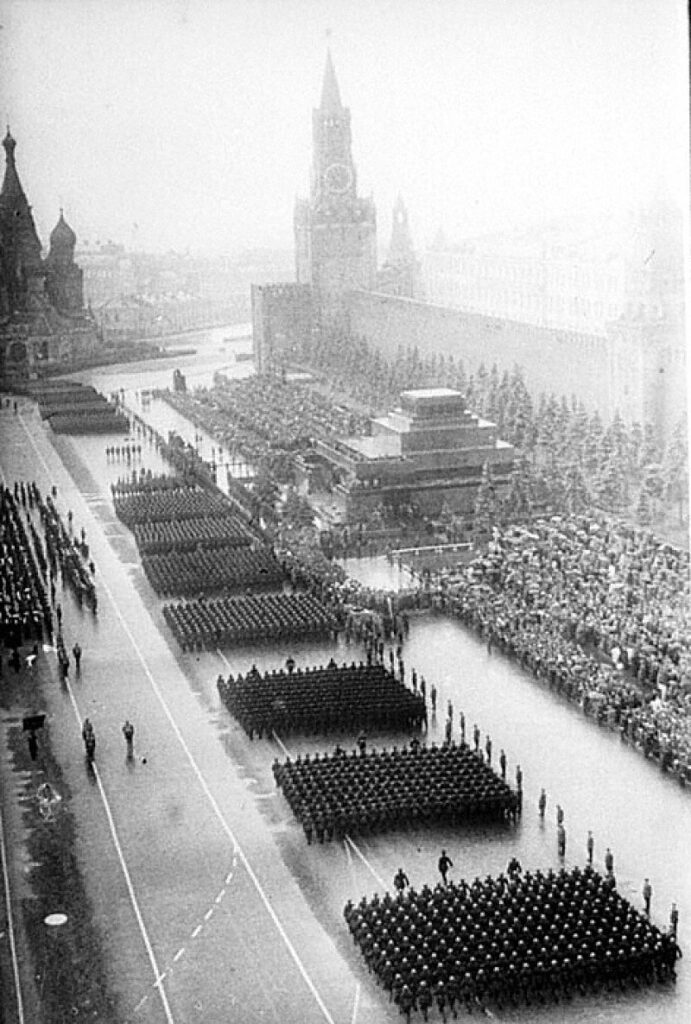
And the bigger demon won… with the natural result that as the Red Army advanced westwards in the later stages of the war, one of the greatest exoduses in human history took place. Millions of people of various nations fled before the apocalyptic beast – especially Russians, who knew precisely what the return of Soviet power portended. These included almost the whole hierarchy of the Belorussian and Ukrainian Autonomous Churches, together with many future luminaries of the Russian Church Abroad such as Metropolitan Vitaly, Archbishops Vitaly and Averky of Jordanville, Leonty of Chile and Andrew of Rockland.
The behaviour of the Red Army soldiers was almost unbelievably bestial, cruel and lustful. This has been excused by Soviet propagandists on the grounds that it was natural for the soldiers to take vengeance on the Germans for their atrocities in Russia. Such an argument might convince a pagan or a communist, but hardly a Christian, still less an Orthodox Christian.
In any case, what atrocities had the female population of the German provinces committed? And yet, as recent historical research has demonstrated, it was precisely this element of the population that suffered the most. For, as Richard Evans, Regius Professor of Modern History at Cambridge University, writes: “Women and girls were subjected to serial rape wherever they were encountered. Rape was often accompanied by torture and mutilation and frequently ended in the victim being shot or bludgeoned to death. The raging violence was undiscriminating. Often, especially in Berlin, women were deliberately raped in the presence of their menfolk, to underline the humiliation. The men were usually killed if they tried to intervene. In East Prussia, Pomerania and Silesia it is thought that around 1,400,000 women were raped, a good number of them several times. Gang-rapes were the norm rather than the exception. The two largest Berlin hospitals estimated that at least 100,000 women had been raped in the German capital. Many caught a sexually transmitted disease, and not a few fell pregnant; the vast majority of the latter obtained an abortion, or, if they did give birth, abandoned their baby in hospital. The sexual violence went on for many weeks, even after the war formally came to an end. German women learned to hide, especially after dark; or, if they were young, to take a Soviet soldier, preferably an officer, as a lover and protector…”[14]
In this way, if Patriarch Cyril is to be believed, did the glorious Christian soldiers of the Red Army “redeem the sins of the Russian people”! In this way did Stalin “trample down death by death”! In this way was Christ glorified in a new Pascha, a new and unprecedentedly glorious propitiatory act!
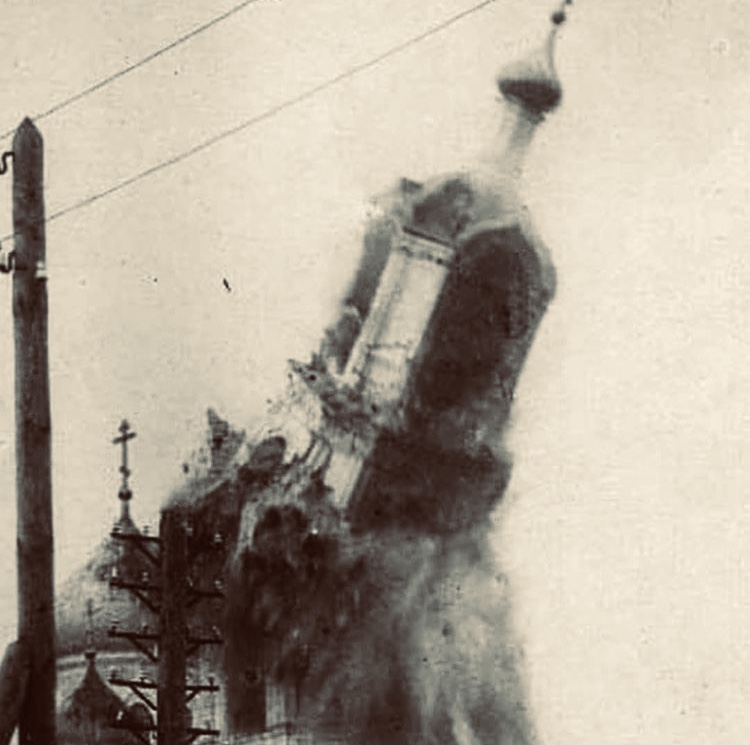
But no: the results of the war were irredeemably evil for all the peoples who came within the Soviet sphere – and even outside that sphere, since Stalin bullied his allies into forcibly repatriating millions of Russians in accordance with the Yalta agreement. Thus “from 1945 to 1947, 2,272,000 people were handed over by the Allies to the USSR. Of these more than 600,000 had served in the ‘eastern forces’ of the German army. About 200,000 managed to remain in the West.” However, according to Vitaly Shumilo, “more than 6 million ‘Soviet’ prisoners of war, ‘Osty’ workers, refugees and émigrés were forcibly repatriated to the USSR up to 1948. The majority of them perished within the walls of Stalin’s NKVD.”[16]
The largest category of those forcibly repatriated was composed of those who had fought in the Red army. Already during the war the authorities had executed 157,000 Red Army soldiers (the equivalent of fifteen divisions) and almost a million were arrested.[17] And there was no respite now for those who had spent the war in Nazi prisoner-of-war camps or had simply witnessed the prosperity of the West and therefore knew that Soviet propaganda about the West was a lie. Thus Protopriest Michael Ardov writes: “I remember quite well the years right after the war, 1945, 1946, and how Moscow was literally flooded with cripples, soldiers who were missing arms and legs, returning from the war, and then, suddenly, they all disappeared. Only later did I learn that they were all picked up and packed off to die on the island of Valaam, in order not to spoil the view in the capital. There was no monastery there then. You can just imagine for yourselves the conditions that they had to endure there while living out their last days. They were so poor, and were reduced to begging in order to survive. This is how they were treated, just so that the capital should not be spoiled by their presence! This I remember quite well. Besides this, as we all know that, because of Stalin and his military leaders, an enormous number of Soviet citizens were taken out of the country as prisoners. The government immediately disowned them; they were immediately branded traitors. And the consequences of this were that when they, for some reason or another, came back to our country, most of them were whisked off to Stalin’s labour camps. This is how they treated the veterans then…”[18]
In 1945 a hand-picked selection of the most craven bishops in Russia were ordered to elect Alexis (Simansky) as patriarch of Moscow, and agreed to an unprecedentedly total control of the State over the Church. Shumilo writes: “An internal result of the Moscow council of 1945 that was positive for the Soviet regime was the fact that, thanks to the participation in it of the Eastern Patriarchs, the appearance of ‘legitimacy’ and ‘canonicity’ had been given to this Stalin-inspired undertaking. This led into error not only a part of the Orthodox clergy and hierarchy in the emigration, but also many of the True Orthodox Catacomb pastors in the USSR, who naively did not suspect that there might have been any anti-canonical crimes.”[19]
The decisions of the council had direct and extremely unpleasant consequences for those Orthodox Christians who remained faithful to Christ. Thus Professor Ivan Andreev, who was a member of the Catacomb Church before the war, writes: “The Underground or Catacomb Church in Soviet Russia underwent her hardest trials after February 4th, 1945, that is, after the enthronement of the Soviet Patriarch Alexis. Those who did not recognize him were sentenced to new terms of imprisonment and were sometimes shot. Those who did recognize him and gave their signature to that effect were often liberated before their terms expired and received appointments… All secret priests detected in the Soviet zone of Germany were shot.”[20] This fact, writes M.V. Shkarovsky, “is partly confirmed by documents in the archives of the security police. In 1944-45 in the camps a whole series of cases on counter-revolutionary organizations was fabricated. In these, many clergymen were sentenced to an increase in their sentence or were shot.”[21]
Other consequences of Stalin’s “redemption” included the enslavement of the Romanian, Bulgarian and Serbian Orthodox Churches to the KGB and its sister-organizations, as a result of which hundreds of bishops and clergy were killed while the survivors became obedient puppets of the collective Antichrist. Then began the terrorization and communization of the captive populations of Eastern Europe; and if the physical and spiritual devastation in these lands did not equal that in the Soviet Union, this was only because they were under the communist yoke for a shorter period, and most of that period took place after the death of Stalin… Meanwhile, as the “free” population of the Soviet Union suffered starvation conditions, the population of the Gulag swelled to its greatest-ever extent, making the period after the war still more terrible for Russia than the period before it…
Further west, the communist parties of France and Italy received a new lease of life from “Uncle Joe’s” prestigious victory and the generous subsidies he gave them (at the expense of the starving Russian people, of course), so that only the presence of American troops in Western Europe and the still more generous (self-interested, but still generous) subsidies of the American Marshall plan saved Western Europe from the Soviet yoke. As the Iron Curtain fell across Europe, hordes of Stalin’s redeeming angels dispersed throughout the world, spreading peace and goodwill for all men – except Christians, Capitalists and all men in general who did not embrace the antichristian creed of Dialectical Marxism.
Their greatest victory came in 1949, when the world’s most populous country, China, embraced communism. Now about a quarter of the earth’s surface, from Berlin to Peking, was under communist rule. Involuntarily, the words of the seer come to mind: I looked, and behold, a pale horse [the Greek word for “pale” is khloros, the colour of human flesh]. And the name of him who sat on it was Death, and Hades followed after him. And power was given to them over a quarter of the earth, to kill with the sword, and with hunger, and with death, and by the beasts of the earth (Revelation 6.8).
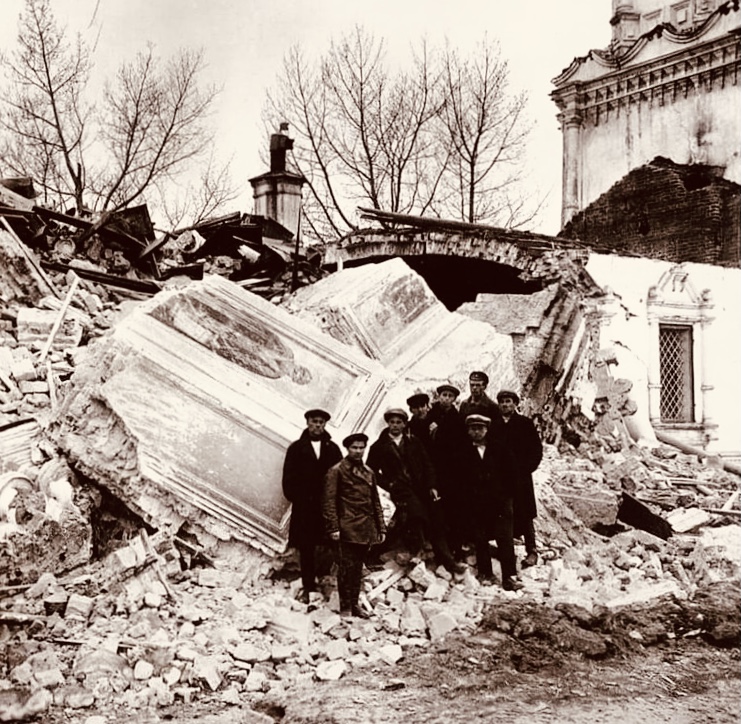
It is characteristic of fallen men to understand everything in crudely physical and external terms, in terms of men alive or dead, lands conquered or lost, goods seized or destroyed… But Christians are exhorted not to judge by external appearances (John 7.24), but by internal reality. For Christianity is the religion of the Spirit, of the invisible and the immaterial, which manifests itself in the visible and the material, but has its roots elsewhere.
The sergianists’ “theology of victory” proclaims a crudely sensual, blasphemously heretical understanding of redemption and of the basic principles of Christian morality. Their understanding of redemption through Stalin is essentially the same as the Judaic understanding of redemption through their false Messiah: a national-political liberation from, and extermination of, their external enemies by means of war and bloodshed. While Patriarch Cyril may talk about the victory of 1945 as having redeemed the Russian people from their sins, this is merely a quasi-religious fig-leaf for a shamelessly non-religious and even anti-religious goal.
Christ rejected the Judaic dream of national liberation from the Romans, and for that He was crucified. The redemption He wrought, which was redemption from sin, death and the devil, as opposed to a national-political oppressor, was accomplished through precisely the opposite means to those employed in the Jewish and Soviet-German wars: through the voluntary acceptance of suffering and humiliation without the slightest hint of vengefulness, hatred, lust or pride. Externally, Christ and His work appeared to suffer complete defeat as His Body was laid in the tomb and His disciples fled in fear and despair. Externally, His Death on the Cross appeared to change nothing – at any rate, in the political domain. But internally, within His own Soul and Body, within the depths of Satan’s domain in the heart of the earth, and later in the souls and bodies of those who followed Him in truth, sin was redeemed, death was abolished and Satan crushed in a Victory far more devastating and complete than any national or political victory.
St. Paul writes: “Be not overcome of evil, but overcome evil with good” (Romans 12.21). However, the soldiers of the Red Army in 1945, while overcoming the evil of Nazism in the physical sense, were overcome by it morally and spiritually. While standing for an utterly evil world-view themselves, they imbibed all the evil of their adversaries, their pride, their lust, their race-hatred. And after the war, while the Germans, humbled by defeat, repented and achieved Vergangenheitsbewältigung, “the overcoming of the past”, the Soviets, puffed up by victory, multiplied their iniquities and impenitence.
Physical evils can be overcome by physical means, but spiritual evil can be overcome by nothing else than spiritual means. And the twin demons of Sovietism and Nazism are undoubtedly spiritual evils. Thus Elder Aristocles of Moscow and Mount Athos declared in 1911: “An evil will shortly take Russia, and wherever this evil goes, rivers of blood will flow. It is not the Russian soul, but an imposition on the Russian soul. It is not an ideology, nor a philosophy, but a spirit from hell…”
Such spiritual evils can be overcome only by spiritual good, by holiness. This was the teaching of Tsar-Martyr Nicholas, in his last message to the world, as passed on by his daughter, the martyred Great-Princess Olga Nikolayevna: “Father asks the following message to be given to all those who have remained faithful to him, and to those on whom they may have an influence, that they should not take revenge for him, since he has forgiven everyone and prays for everyone, that they should not take revenge for themselves, and should remember that the evil which is now in the world will be still stronger, but that it is not love that will conquer evil, but only love…” And the reverence in which the Tsar-Martyr is held in Russia today is one of the few signs that all is not lost, that good may finally triumph over evil there.
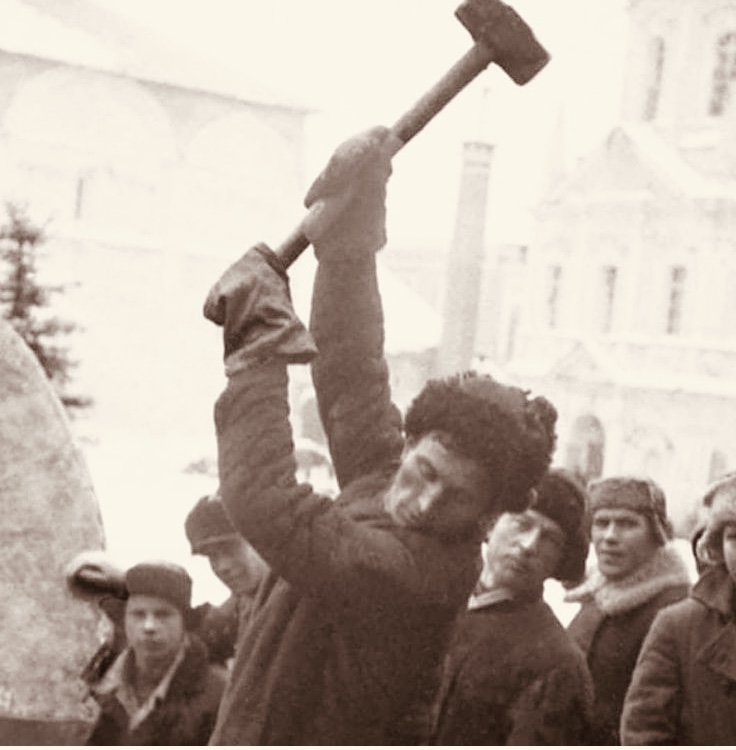
But was there nothing, it may be asked, to redeem the “victory” of 1945, that bacchanalia of evil? Yes, there was, and we find it again in Revelation: When he opened the fifth seal, I saw under the altar the souls of those who had been slain for the word of God and for the testimony which they held. And they cried with a loud voice, saying, “How long, O Lord, holy and true, until You judge and avenge our blood on those who dwell on the earth?” Then a white robe was given to each of them, and it was said to them that they should rest a little while longer, until both the number of their fellow servants and their brethren who would be killed as they were was completed (6. 9-11). In other words, the silver lining in the black cloud, the redeeming factor in the horrific triumph of evil that was 1945, was the feat of the Holy New Martyrs of Russia who rejected Soviet power.
Not, of course, that any mere man can redeem – and not the least of Patriarch Cyril’s heresies is his implication that mere men can redeem sins independently of Christ the Redeemer. For, as David says: “A brother cannot redeem; shall a man redeem? He shall not give to God a ransom for himself, nor the price of redemption of his own soul, though he hath laboured for ever, and shall live to the end” (Psalm 48.7-8 (LXX)). Not even the greatest of the saints, and certainly not the raging atheist rapists of the Red Army, can be said to redeem anyone. Only Christ God is the Redeemer, He Who has offered up the perfect propitiatory Sacrifice for the sins of the whole world.
And only He is the Victor. For the true victor is not he who kills men and conquers kingdoms, thereby offering pleasing sacrifices to the devil, the hater of men and “ruler of this world”, but He Who through His perfect Sacrifice of Himself to God destroyed the power of the devil himself, thereby freeing men from death.
Nevertheless, of the saints and the martyrs it can truly be said that they participate in the redeeming Sacrifice and Victory of Christ to this extent, that by their sufferings they “fill up in their flesh what is lacking in the afflictions of Christ” (Colossians 1.24). They offered themselves up as whole-burnt sacrifices to the Saviour, and their sacrifice was not in vain, but rather gives them the boldness to intercede for the avengement of their blood and the bringing forward of the final victory of Christ over Bolshevism…
*
So where does this leave Patriarch Cyril, and his glorification of the “redemptive sacrifice” of the Bolshevik Satanists? Metropolitan Anastasy, first-hierarch of the Russian Church Abroad, put it well when, in response to Patriarch Alexis’ description of Stalin as “the chosen one of the Lord, who leads our fatherland to prosperity and glory”, he wrote that at this point “the subservience of man borders already on blasphemy. Really – can one tolerate that a person stained with blood from head to foot, covered with crimes like leprosy and poisoned deeply with the poison of godlessness, should be named ‘the chosen of the Lord’, and could be destined to lead our homeland ‘to prosperity and glory’? Does this not amount to casting slander and abuse on God the Most High Himself, Who, in such a case, would be responsible for all the evil that has been going on already for many years in our land ruled by the Bolsheviks headed by Stalin? The atom bomb, and all the other destructive means invented by modern technology, are indeed less dangerous than the moral disintegration which the highest representatives of the civil and church authorities have put into the Russian soul by their example. The breaking of the atom brings with it only physical devastation and destruction, whereas the corruption of the mind, heart and will entails the spiritual death of a whole nation, after which there is no resurrection.”[30]
And yet a resurrection of Holy Russia is possible. But it can come about only when the nation as a whole repents, condemns the satanic victory of 1945, anathematizes “Patriarch” Cyril and all those with him who glorify it, and returns to a real knowledge of the one and only Victor over death and hades, the Lord Jesus Christ. Each one who repents in this way is offering his own true sacrifice to counteract the false sacrifices of the Bolsheviks. For, as Elder Aristocles said: “One must repent of one’s sins and fear to do even the least sin, but strive to do good, even the smallest. For even the wing of a fly has weight, and God’s scales are exact. And when even the smallest of good in the cup tips the balance, then will God reveal His mercy upon Russia…”
May 15/28, 2010; revised May 21 / June 3, 2010 and April 26 / May 9, 2020.
[1] “Bogoslovie ‘Pobedy’”, Nasha Strana (Buenos Aires), no. 2891, May 8, 2010 (in Russian).
[2] P.K. Kurochkin, Evoliutsia sovremennogo russkogo pravoslavia, Moscow, 1971, pp. 81, 82 (in Russian)
[3] Zhurnal Moskovskoj Patriarkhii), 1967; translated in Orthodox Life, № 110, March-April, 1968, p. 25.
[4] Grabbe, Dogmat o Tserkvi v sovremennom mire, report to the Third All-Diaspora Council, 1974 (in Russian).
[5] V. Chikin, A. Prokhanov, “Religia Pobedy: Beseda”, Zavtra, № 32 (297), 1999, p. 2. Cf. Egor Kholmogorov, “Dve Pobedy”, Spetznaz Rossii, № 5 (44), May, 2000, and my reply: V. Moss, http://www.orthodoxchristianbooks.com/articles/316/imperia-i-anti-imperia-(-russian).
[6] Yuri Krupnov, “The Victory is Pascha”, http://pravaya.ru/look/7580?print=1 (in Russian).
[7] Dudko, “Mysli sviaschennika”, http://patriotica.narod.ru/history/dudko (in Russian).
[8] “Bogoslovie Pobedy”, op. cit.
[9] A document of the Commission attached to the President of the Russian Federation on the Rehabilitation of the Victims of Political Repressions, January 5, 1996; Service Orthodoxe de Presse, № 204, January, 1996, p. 15 (in French). According to another source, from October, 1917 to June, 1941 inclusive, 134,000 clergy were killed, of whom the majority (80,000) were killed between 1928 and 1940. (“’Nasha Strana’ – konechno zhe ne Vasha, http://catacomb.org.ua/modules.php?name=Pages&go=print_page&pid=771, p. 3 (in Russian).
[10]Kuznetsov, “O Sovietsko-Germanskoj Vojne”, http://catacomb.org.ua/modules.php?name=Pages&go=print page&pid=570 pp. 3-4, 7-8 (in Russian). A. Soldatov writes: “The memory of the ‘Vlasovtsy’ is dear to many children of the Russian Church Abroad (ROCOR)… In the memorial cemetery of ROCOR in Novo Diveyevo near New York there stands an obelisk which perpetuates the memory of all the officers and soldiers of the Russian Army of Liberation, who perished ‘in the name of the idea of a Russia free from communism and fascism” (“Radosti Paskhi i Skorb’ Pobedy”, Moskovskie Novosti and Vertograd, № 520, May 14, 2005 (in Russian)).
[11] Monk Epiphany (Chernov), “Tserkov’ Katakombnaya na Zemle Rossijskoj” (MS, Old Woking, in Russian).
[12] Solzhenitsyn, The Mortal Danger, London: The Bodley Head, 1980, pp. 39-40.
[13] Krasikov, “’Tretij Rim’ i Bol’sheviki”, in L.M. Vorontsova, A.V. Pchelintsev and S.B. Filatov (eds.), Religia i Prava Cheloveka, Moscow: “Nauka”, 1996, p. 203 (in Russian).
[14] Evans, The Third Reich at War, London: Penguin Books, 2009, pp. 710-711.
[15] Soldatov, op. cit., p. 11, footnote 6.
[16] Shumilo, “Sovietskij Rezhim i ‘Sovietskaia Tserkov’’ v 40-e-50-e gody XX stoletia”, http://catacomb.org.ua/modules.php?name=Pages&go=page&pid=678 (in Russian)).
[17] Alexander Yakovlev, A Century of Russian Violence in Soviet Russia, Yale University Press, 2003.
[18] Ardov, “Avoiding participation in the Great Victory Services”, sermon given on May 8, 2005, Vertograd, May 18, 2005; translated in The Hoffman Wire, May 18, 2005.
[19] Shumilo, op. cit.
[20] I.M. Andreev (Andreevsky), “The Catacomb Church in the Russian Land”.
[21] Shkarovsky, Russkaia Pravoslavnaia Tserkov’ pri Staline i Khruscheve, Moscow, 2005, p. 205 (in Russian).
[22] Lucas, The New Cold War, London: Bloomsbury, 2008, p. 102.
[23] http://ambrose-s.livejournal.com/42902.html, May 3, 2010.
[24] “With a grand total of victims variously estimated by contributors to the volume at between 85 million and 100 million… the Communist record offers the most colossal case of political carnage in history…” (Martin Malia, in Stéphane Courtois, Nicolas Werth, Jean-Louis Panné, Andrzej Packowski, Karel Bartošek, Jean-Louis Margolin, The Black Book of Communism, London: Harvard University Press, 1999, p. x).
[25] Lebedev, Velikorossia, St. Petersburg, 1999, p. 429 (in Russian).
[26] Yurovsky, in Edvard Razinsky, The Last Tsar, London: Arrow, 1993, p. 177.
[27] See Nikolai Kozlov, Krestnij Put, Moscow, 1993; Enel, “Zhertva”, Kolokol, Moscow, 1990, №5, pp. 17-37, and Michael Orlov, “Yekaterinburgskaya Golgofa”, Kolokol, 1990, №5, pp. 37-55; Prince Felix Yusupov, Memuary, Moscow, 1998, p. 249; Lebedev, op. cit., p. 519 (in Russian).
[28] Jonathan Fenby, Alliance, London: Pocket Books, 2006, p. 152; cf. p. 65.
[29] St. Jerome, Homily 94, on Pascha.
[30] I.M Andreyev, Is the Grace of God present in the Soviet Church?, Wildwood, Alberta, 2000, pp. 32-33 (the translation has been slightly altered by me, V.M.).

